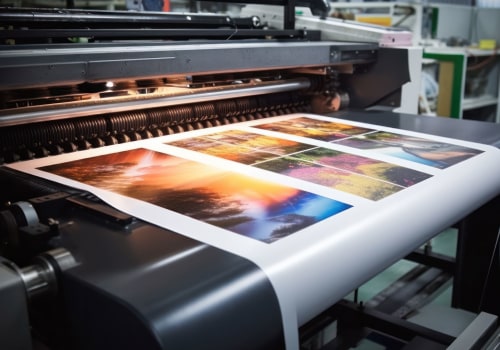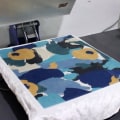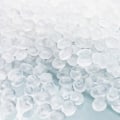Fabric is one of the most versatile and widely used materials in the world. From clothing to upholstery, curtains to soft furnishings, fabric is ubiquitous in our lives. But what exactly is fabric and why do we use it so much? This comprehensive overview of fabric will help to answer these questions and explore the wide range of uses for this versatile material. Fabric is a flexible material composed of natural or synthetic fibres, woven or knitted together. The most common fabrics are made from wool, cotton, linen, silk, and synthetic materials such as nylon, rayon, and polyester.
Each type of fabric has different qualities and properties that make it suitable for a particular purpose. For example, wool is naturally warm, while cotton is lightweight and breathable. Synthetic fabrics are often hard-wearing and easy to care for. Fabric can be used to make a variety of items, from clothing to furniture and curtains. Its versatility means that fabric can be used for almost any purpose, from making a dress to creating upholstery for your sofa.
The use of fabric in large format printing materials such as paper and cardstock is also becoming increasingly popular. This comprehensive overview of fabric will explore the various types of fabric available, their properties and uses, and how they can be used in large format printing materials such as paper and cardstock. So read on to learn more about this versatile material. First, it is important to understand the history of fabric. It has been used since ancient times for clothing, bedding, tapestries, and more. Throughout history, new fabrics have been invented and used for various purposes.
For example, denim was invented in the 19th century for durable workwear, while rayon was invented in the 20th century as an affordable alternative to silk. Next, it is important to understand the different types of fabric available. There are natural fabrics such as cotton, linen, wool, and silk; synthetic fabrics such as nylon, polyester, spandex; and blend fabrics such as rayon-polyester or cotton-polyester. Each type of fabric has its own unique properties and uses. It is also important to consider the construction of fabric.
Fabrics can be constructed in different ways such as weaving, knitting, felting, and more. The construction of the fabric affects the strength, durability, weight, stretchability, and other properties. In terms of uses, fabric is used for a wide variety of applications. In apparel, it is used for clothing such as shirts, pants, dresses, etc. In home decorating, it is used for curtains, bedding, upholstery, wall coverings, etc.
In large format printing materials and paper and cardstock applications, fabric is used for banners, flags, signs, posters, etc. Finally, when it comes to care and maintenance of fabric, it is important to follow the manufacturer's instructions. Different types of fabrics require different care instructions such as washing temperature or drying cycle. It is also important to remember that some fabrics are prone to shrinking or fading when exposed to sunlight or other elements. Overall, fabric is a versatile material with a long history and many uses. It is important to understand the different types of fabrics available as well as their properties and uses in order to make the best selection for your project.
History of Fabric
Fabric has been used for thousands of years, with the earliest known evidence of its use dating back to 8,000 BC.During ancient times, fabric was used for clothing, wall coverings, and more. In the Middle Ages, fabrics such as wool and linen were commonly used. In the Renaissance period, fabrics such as silk and velvet became popular. In more modern times, fabrics such as cotton, polyester, and nylon have become commonplace.
Today, fabric is still used in a variety of applications. It is used in fashion and home décor, in large format printing materials and paper and cardstock. It is also used to make furniture, bedding, linens, and even curtains. Fabric is a versatile material that is highly durable, lightweight, and comes in a wide range of colors and textures.
Uses for Fabric
Fabric is a versatile material that is used in a variety of applications, from apparel to large format printing materials.Clothing is one of the most common uses for fabric, as it is durable, lightweight, and comes in a wide range of colors and textures. Fabrics are also used in furniture, wall coverings, upholstery, and more. In large format printing materials and paper and cardstock, fabric is often used to create a durable, long-lasting product. When it comes to apparel, fabric is used to create garments such as dresses, blouses, skirts, and jackets. Different types of fabrics can be used to create different effects.
For instance, cotton is often used in summer clothing due to its breathability, while wool is popular in winter due to its warmth. Other fabrics such as silk and linen are often used for formal occasions. Fabric is also used in home décor items such as curtains, upholstery, rugs, and bedding. It can also be used for wall coverings or for outdoor furniture and accessories. In large format printing materials and paper and cardstock, fabric is often used to create a strong, long-lasting product that can withstand wear and tear. In addition to these uses, fabric can also be used in crafts such as quilting or embroidery.
It can be used to create unique pieces of art or to make small items like bags or wallets. There are endless possibilities when it comes to using fabric in crafts.
Care and Maintenance of Fabric
Different types of fabrics require different care and maintenance techniques to ensure that they remain in the best condition for a long time. Natural fabrics, such as wool, silk, cotton and linen, should be dry cleaned or hand washed with a mild detergent and cold water. Synthetic fabrics, such as polyester, spandex and nylon, should be machine washed in cold water with a mild detergent, and can be machine dried with low heat.No matter what type of fabric you are using, it is important to follow the care instructions on the label. Some fabrics may require special treatments or may not be safe to wash or dry clean. Always test a small area of the fabric first before attempting any treatments or cleaning methods. For more delicate fabrics, spot cleaning may be necessary.
To spot clean, use a clean cloth soaked in a solution of mild detergent and warm water. Gently rub the stained area in a circular motion until it is no longer visible. Do not rub too hard or use too much force, as this could damage the fabric. To prevent fading, shrinkage and other damage to fabric, it is important to avoid excessive exposure to direct sunlight and to keep fabric away from heat sources. If possible, always hang fabric items on hangers rather than folding them, as this will help reduce wrinkles and keep the fabric looking its best. By taking the time to properly care for your fabrics, you can ensure that they stay in good condition for many years to come.
Fabric Construction
Fabric construction is an important factor in determining the strength, durability, and texture of a fabric.Fabrics are typically woven or knitted together using various yarns or fibers. Woven fabrics are formed by threads of yarn interlaced at right angles to create a flat fabric. Knitted fabrics, on the other hand, are formed by looping the yarn into a series of connected loops. Both woven and knitted fabrics can be made from a variety of yarns or fibers such as cotton, wool, silk, and synthetic materials. The weaving or knitting technique used to create a fabric affects its properties.
Woven fabrics tend to have a smooth surface, are more durable, and are often heavier than knitted fabrics. On the other hand, knitted fabrics tend to have a softer feel and are often lighter weight than woven fabrics. Additionally, the type of yarn used to construct a fabric also affects its properties such as its strength, absorbency, elasticity, and color retention. In large format printing materials and paper and cardstock, fabric is a popular choice due to its durability, weight, and wide range of colors and textures. Understanding how fabrics are constructed is an important part of choosing the right fabric for your project.
Types of Fabric
Fabric is a versatile material used in a variety of applications.There are several different types of fabric, ranging from natural fibers like cotton to synthetic fibers like nylon. Natural fibers are derived from plants and animals, while synthetic fibers are manufactured in a laboratory. Each type of fabric has its own unique characteristics and properties that make it suitable for different purposes.
Natural Fibers
Cotton is one of the most common natural fibers used in fabric.It is soft, breathable, and absorbs moisture well, making it a popular choice for clothing. Linen is another common natural fiber. It is strong and durable, but also wrinkles easily. Wool is a popular fabric for winter clothing, as it is warm and insulates well.
Other natural fibers include hemp, silk, and flax.
Synthetic Fibers
Synthetic fibers are man-made materials created in a laboratory setting. Nylon is one of the most popular synthetic fabrics. It is lightweight and strong, making it a great choice for outdoor clothing and athletic wear.Polyester is another commonly used synthetic fiber. It resists wrinkling, fading, and shrinking, making it a good choice for upholstery fabrics. Other synthetic fabrics include acrylic, polypropylene, and spandex. Fabric is an extremely versatile material that has a long and varied history. From clothing, furniture, and wall coverings to large format printing materials and paper and cardstock, fabric has a range of uses that make it the perfect choice for any project.
It is important to understand the different types of fabric, their properties, and their uses in order to make the best selection. Proper care and maintenance of fabric is also essential to ensure that it remains in good condition. Fabric is an ideal choice for a variety of applications, offering durability, weight, and a wide range of colors and textures.











Leave Message